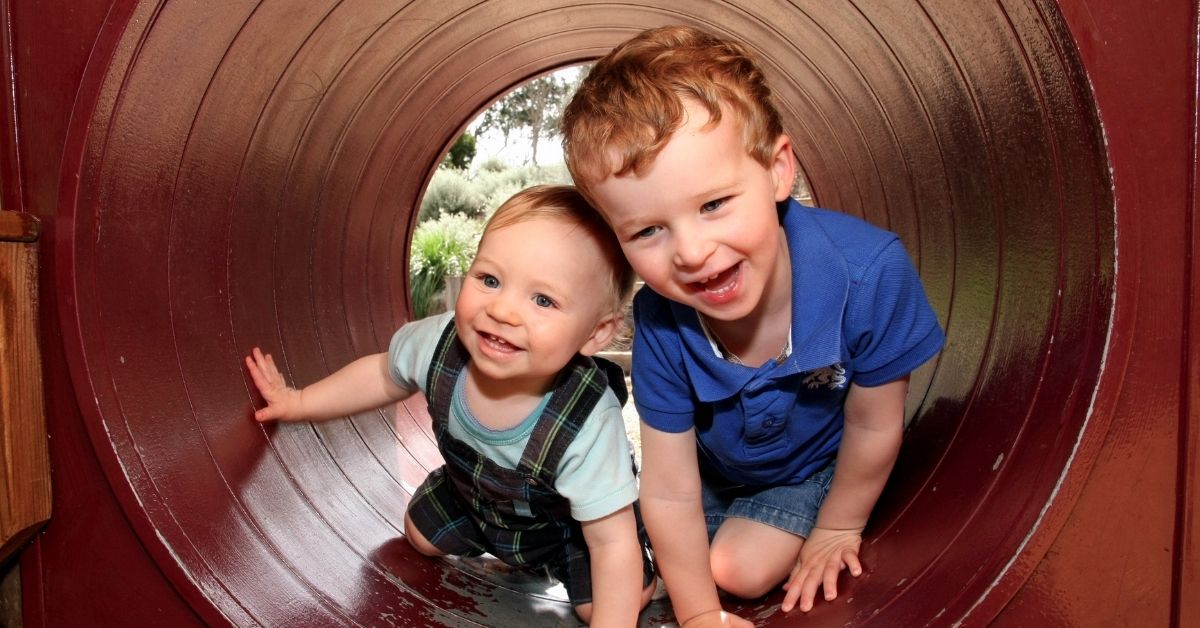
Author: Alison L. Christy, MD, PhD
Providence Pediatric Neurology at St. Vincent Medical Center —Portland, Oregon
Reviewed: July 2022
SUMMARY
Schizencephaly is a problem with the early formation of the brain. It results in a split (or cleft) in one part of the brain. Schizencephaly can increase a patient’s risk for:
- Development delays
- Seizures
JUMP TO
Disorder Overview
DESCRIPTION
During fetal brain development, cells must move. They migrate from one area of the brain to another. Sometimes cells do not migrate entirely. This causes a cortical malformation. One type of cortical malformation is a split, or cleft, in one part of the brain. This is called schizencephaly.
A cleft can happen on one side of the brain (unilateral). It can also occur on both (bilateral). It can be the only brain abnormality (isolated). Or it can occur with other abnormalities.
Often the area around the cleft has many small folds. These are called polymicrogyria. Some children may also have:
- Microcephaly
- Hydrocephalus
- Septo-optic dysplasia
The cleft may extend from the outside of the brain to the fluid-filled ventricles inside. This is called open-lip schizencephaly. The cleft may also be shorter. In this case, it stops before reaching the ventricle. This is called closed-lip schizencephaly.
Many children with schizencephaly will have seizures. Most will have some differences in their development.
When more changes are noted on pictures of the brain, children usually have more risk for:
- Seizures
- Developmental problems
For instance, there may be more changes with bilateral or open-lip schizencephaly.


SIGNS AND SYMPTOMS
Sometimes, schizencephaly can be completely asymptomatic. This is more likely with a unilateral closed-lip schizencephaly.
Other children with schizencephaly may have moderate or severe developmental problems. They may:
- Walk and talk later than other children
- Experience lifelong challenges with movement and communication
Schizencephaly often causes seizures. Some children will have frequent seizures. They may need many medications. Some children rarely have seizures. They may not need medication at all.
The motor centers of the brain control movement on the opposite side of the body. This means that the right motor cortex controls the left arm and leg. Some people with schizencephaly have weakness and/or tight muscles on the side of the body opposite from their abnormality.
CAUSES
Most of the time, we cannot identify why a child develops schizencephaly.
Rarely, schizencephaly can be caused by a variation in certain genes. These include:
- EMX2
- SIX3
- SHH
- COL4A1
Sometimes, schizencephaly can be associated with:
- Infection
- Use of certain medications during pregnancy


LABORATORY INVESTIGATIONS
Schizencephaly is diagnosed with pictures of the brain.
Usually, magnetic resonance imaging (MRI) is the best test to diagnose this condition. It may be visible on a fetal ultrasound. However, doctors may still get an MRI after birth. This allows them to see it better.
Other testing may include:
- Electroencephalogram (EEG): to evaluate seizures
- Genetic testing: to identify the cause of brain malformation
TREATMENT AND THERAPIES
There is no treatment for schizencephaly. A cleft in the brain cannot be repaired. The brain will not heal itself with time.
However, some treatments can improve a patient’s quality of life.
- Seizure medication: Many children with schizencephaly will have seizures. Children may be diagnosed with focal epilepsy. Medications may decrease the frequency and severity of seizures.
- Treatment for spasticity (muscle tightness): Some children will have very tight muscles on the side of the body opposite the clefts. The following can help increase comfort and improve physical development:
-
- Medications
- Physical therapy
- Orthopedic treatments like casts and braces
- Developmental therapies: Some children with schizencephaly will have problems with:
-
- Coordination
- Learning
- Communication
These problems can be mild, moderate, or severe. They should not worsen with age. They may improve with:
- Physical therapy
- Occupational therapy
- Speech therapy


OUTLOOK
Schizencephaly itself does not shorten the lifespan. However, associated problems can be life-threatening. These include:
Many people with this condition will have developmental differences. They may:
- Walk later
- Talk later
- Struggle with school
Some may need lifelong support.
A child with schizencephaly may be diagnosed with cerebral palsy. This means they have a problem with movement. It will not get worse with time. These movement problems may improve with therapy.
RELATED DISORDERS
- Hydrocephalus (can accompany open-lip schizencephaly)
- Agenesis of the corpus callosum
- Septo-optic dysplasia
- Microcephaly
- Polymicrogyria
- Cortical malformations
- Focal epilepsy
- Cerebral palsy
Resources
Schizencephaly Families and Support
Schizencephaly Families and Support is a private Facebook group supporting families with children who have schizencephaly. Currently they have over 600 members.


Child Neurology Foundation (CNF) solicits resources from the community to be included on this webpage through an application process. CNF reserves the right to remove entities at any time if information is deemed inappropriate or inconsistent with the mission, vision, and values of CNF.
Research
ClinicalTrials.gov for Schizencephaly (birth to 17 years).
These are clinical trials that are recruiting or will be recruiting. Updates are made daily, so you are encouraged to check back frequently.
ClinicalTrials.gov is a database of privately and publicly funded clinical studies conducted around the world. This is a resource provided by the U.S. National Library of Medicine (NLM), which is an institute within the National Institutes of Health (NIH). Listing a study does not mean it has been evaluated by the U.S. Federal Government. Please read the NLM disclaimer for details.
Before participating in a study, you are encouraged to talk to your health care provider and learn about the risks and potential benefits.
The information in the CNF Child Neurology Disorder Directory is not intended to provide diagnosis, treatment, or medical advice and should not be considered a substitute for advice from a healthcare professional. Content provided is for informational purposes only. CNF is not responsible for actions taken based on the information included on this webpage. Please consult with a physician or other healthcare professional regarding any medical or health related diagnosis or treatment options.
References
Braga VL, da Costa MDS, Riera R, Dos Santos Rocha LP, de Oliveira Santos BF, Matsumura Hondo TT, de Oliveira Chagas M, Cavalheiro S. Schizencephaly: A Review of 734 Patients. Pediatr Neurol. 2018 Oct;87:23-29. https://doi.org/10.1016/j.pediatrneurol.2018.08.001. Epub 2018 Aug 8. PMID: 30501885.
Halabuda A, Klasa L, Kwiatkowski S, Wyrobek L, Milczarek O, Gergont A. Schizencephaly-diagnostics and clinical dilemmas. Childs Nerv Syst. 2015 Apr;31(4):551-6. https://doi.org/10.1007/s00381-015-2638-1. Epub 2015 Feb 18. PMID: 25690450; PMCID: PMC4359713.
National Institutes of Health National Center for Advancing Translational Sciences. Schizencephaly [Internet]. Gaithersburg, MD: Genetic and Rare Diseases Information Center. 2021. Available from: https://rarediseases.info.nih.gov/diseases/166/schizencephaly
Stopa J, Kucharska-Miąsik I, Dziurzyńska-Białek E, Kostkiewicz A, Solińska A, Zając-Mnich M, Guz W, Samojedny A. Diagnostic imaging and problems of schizencephaly. Pol J Radiol. 2014 Nov 30;79:444-9. https://doi.org/10.12659/PJR.890540. PMID: 25473439; PMCID: PMC4253694.
Thank you to our 2023 Disorder Directory partners:





